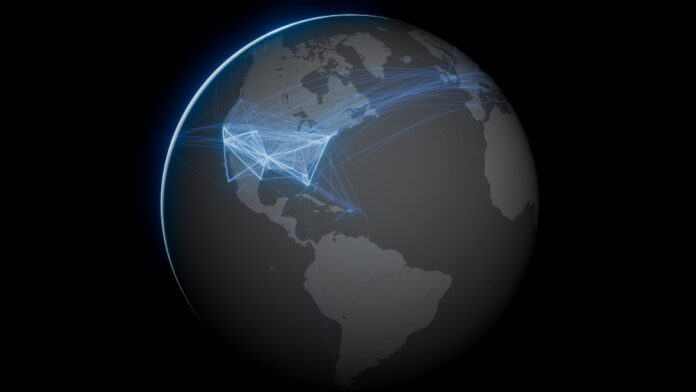The Starlink global outage that struck on July 24, 2025, marked one of the most significant disruptions in the satellite internet service’s operational history, leaving millions of users worldwide without connectivity for over two hours. unprecedented failure critical vulnerabilities in what has become essential infrastructure for military operations, rural connectivity, and emergency services.
Timeline of the crisis
The outage began at approximately 3:15 PM Eastern Time on Thursday, with user reports flooding into Downdetector shortly after. According to outage tracking data, reports surged around 3:24 PM ET, quickly escalating to over 57,000 incidents. The peak came at 3:39 PM ET with more than 58,000 reported cases, before beginning a gradual decline in numbers.
SpaceX didn’t acknowledge the Starlink global outage publicly until 4:05 PM ET, nearly an hour after widespread reports began circulating. The company posted on social media: “Starlink is currently in a network outage, and we are actively implementing a solution. We appreciate your patience, we’ll share an update once this issue is resolved.”
Service restoration began around 5:30 PM ET for some users, with Michael Nicolls, Starlink’s Vice President of Engineering, announcing at 6:23 PM ET that the network had “mostly recovered from the network outage, which lasted approximately 2.5 hours.”
Global impact and scale
The scope of the Starlink global outage was international, affecting users in North America, Europe, Asia, Africa, and Australia. Major cities reporting connectivity issues included San Francisco, Los Angeles, Dallas, New York, Boston, Chicago, as well as international locations like Montreal, Toronto, London, Berlin, and numerous other metropolitan areas.
Network monitoring firm NetBlocks reported that overall connectivity dropped to just 16% of ordinary levels during the peak of the outage. With Starlink serving over six million users in roughly 140 countries and territories, the potential impact reached millions of subscribers who depend on the service for their primary internet access.
Critical infrastructure at risk
Perhaps most concerning was the outage’s impact on critical infrastructure and military operations. Ukrainian military communications suffered significant disruption, affecting systems that support extensive unmanned aerial operations in the front lines in the ongoing conflict with Russia. Ukrainian officials acknowledged the incident via Telegram, noting temporary connectivity losses in several regions where Starlink has become vital for battlefield communications.
The disruption also affected businesses and government services in rural and remote areas where Starlink often serves as the only available high-speed internet option. Industries dependent on uninterrupted connectivity, including mining operations, maritime services, and emergency response systems experienced delays and communication breakdowns.
Technical root cause
Nicolls later explained that the Starlink global outage resulted from “a failure of key internal software services that operate the core network,” rather than any issues with SpaceX’s satellite constellation or hardware components. The distinction is important, as it indicates the problem lies in terrestrial infrastructure rather than the 8,000+ satellites orbiting Earth.
The software failure affected what Nicolls described as services that “operate the core network,” suggesting the issue was centralised not distributed in the satellite constellation. The centralisation, while enabling efficient network management, created a single point of failure that could affect the network.
Corporate response and accountability
Elon Musk, CEO of SpaceX, issued a public apology approximately 90 minutes after the outage began. “Service will be restored shortly. Sorry for the outage. SpaceX will remedy [the] root cause to ensure it doesn’t happen again,” Musk wrote on social media.
The company’s official website also experienced issues during the Starlink global outage, displaying “upstream connect error or disconnect/reset before headers” messages, further complicating users’ ability to get information about the service disruption.
Market context and timing
The outage occurred a day after T-Mobile launched its Starlink-powered satellite service to the public, and hours after Musk posted about the rapid growth of Starlink’s Direct-to-Device service for smartphones. The timing raised questions about whether the increased load from new services contributed to the system failure, though SpaceX has not confirmed any connection.
The incident highlights the growing dependence on satellite internet infrastructure and the potential vulnerabilities inherent in centralised network management systems. While SpaceX has committed to conducting a full root cause analysis, the July 24 incident exposes a contradiction in Starlink’s proposition. The service markets itself as a resilient alternative to terrestrial infrastructure, yet it proved vulnerable to the same centralised failure points that plague traditional networks. For military customers like Ukraine paying premium rates for battlefield-critical connectivity, this outage raises uncomfortable questions.
The telecommunications industry must now grapple with whether the current satellite internet model – with its centralised ground control systems – can deliver on promises of superior network resilience. As competitors like Amazon’s Project Kuiper prepare to launch, they would be wise to study this failure and architect more distributed control systems.
The Starlink global outage may prove to be a watershed moment that forces the satellite internet sector to rethink network design priorities, placing redundancy and decentralisation above operational efficiency.
(Image credit: Starlink)
See also: SpaceX teases Starlink Gen3 satellites for Terabit internet speeds
Want to learn more about cybersecurity and the cloud from industry leaders? Check out Cyber Security & Cloud Expo taking place in Amsterdam, California, and London. The comprehensive event is co-located with other leading events including Digital Transformation Week, IoT Tech Expo, Blockchain Expo, and AI & Big Data Expo.
Explore other upcoming enterprise technology events and webinars powered by TechForge here.
👇Follow more 👇
👉 bdphone.com
👉 ultractivation.com
👉 trainingreferral.com
👉 shaplafood.com
👉 bangladeshi.help
👉 www.forexdhaka.com
👉 uncommunication.com
👉 ultra-sim.com
👉 forexdhaka.com
👉 ultrafxfund.com
👉 bdphoneonline.com
👉 dailyadvice.us
